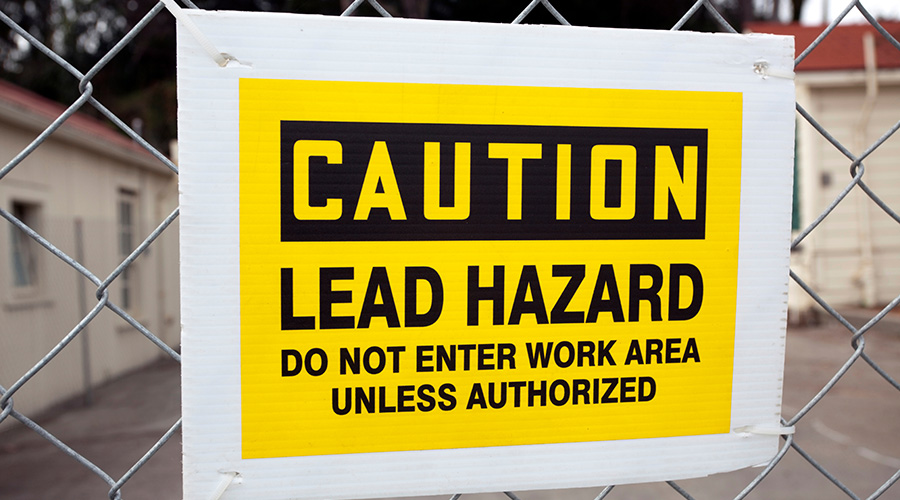Training Spotlight: Safety
When properly developed and delivered, training forms the bedrock of a department’s safety culture
How do technicians react when told they will participate in safety training? How do managers react when they realize employees must take valuable time away from work to watch the same hazard-communication video tape from 15 years ago? And why do organizations waste so much time on safety training when it does anything but motivate workers to work more safely?
These are among the questions maintenance and engineering managers must address in implementing and updating a comprehensive safety-training program. Safety training serves a purpose that reaches far beyond signing an attendance sheet and remaining semi-conscious until break time.
Developing a Safety Culture
A company’s culture is its underlying character or personality. It is a designed set of key values, beliefs and understandings that members of an organization share. The focus and purpose of this culture is to give employees a sense of identity and to generate a commitment to company beliefs and values. Managers will have to understand the existing culture of their organization before they can improve a maintenance department’s safety culture.
One description of an organization’s safety culture is that observable degree of daily efforts by which all employees direct their attention and actions towards improving safety. Managers’ behavior and leadership greatly impacts an organization’s safety culture.
How do managers contribute to a safety culture? First, they must recognize that safety has value to any organization. Managers will need to tap into various sources if they hope to learn more about the value of a strong safety program and to sell upper management on building a safety culture.
The U.S. Occupational Safety and Health Administration (OSHA) offers an interactive computer program, $afety Pays, that helps employers assess the impact of occupational injuries and illnesses on their profitability. It uses a company’s profit margin, the average costs of an injury or illness, and an indirect cost multiplier to project the amount of sales a company would need to generate to cover those costs.
Also, the American Society of Safety Engineers (ASSE) has developed a paper on the return on investment of an effective safety program.
These two resources by themselves make a strong case for the value of safety to an organization in dollars and cents terms that upper management can understand.
Managers also have several tactics for creating a safety microculture within maintenance and engineering departments. They can emphasize safety as a clear priority in the department by:
-
participating in safety orientations for new hires
-
holding supervisors accountable for duties that embrace safety as a value
-
rewarding strong safety performance
-
participating in safety committees and departmental safety meetings
-
reinforcing proper safety values with actions, as well as words.
Training for Safety
Safety training directly impacts an organization’s safety culture. But training will only be effective in supplying knowledge or skills. If a department’s safety problems result from poor employee motivation or attitude, a lack of proper equipment or time, or fear, then training will be useless.
A strong safety culture recognizes when training is effective. Misuse of safety training only demonstrates management’s disconnect from the real work environment.
Safety, health and environmental training is an important element of an effective and efficient overall program. Historically, only a few regulations with limited scope have addressed this type of training. But the information mandated by regulatory requirements often bears little resemblance to effective training.
For example, consider maintenance training for OSHA 1910.147 relating to lockout/tagout. Maintenance technicians do not need detailed knowledge of the regulatory requirements of this standard to properly isolate a machine to prevent injuries. Regulatory compliance training often spends too much time on the content of a regulation and too little time teaching safe ways to perform the work safely.
How do managers identify and evaluate effective safety training methods? A key issue is stipulating the ways training must be adequately designed, developed, delivered, and evaluated. The American Society of Safety Engineers was the secretariat of ANSI Standard Z490, Criteria for Accepted Practices in Safety, Health and Environmental Training. The standard covers all facets of training, including program development, delivery, evaluation and management.
The standard is intended to and can apply to a range of training programs and is a valuable document for an organization looking to provide top-notch, effective safety training. The accompanying article outlines the content of ANSI Standard Z490.
Delivering the Message
Training delivery methods have evolved. Remember the 8mm reel from junior high science class or the slide projectors with upside down or backward images? And everyone has suffered through a lecture or two by a speaker who talked in a monotone, made no eye contact, and knew less about the topic than audience members.
Selecting the appropriate delivery method can make safety training and its management more effective. Remember that the tone set in safety training will mirror the safety culture managers represent. Managers will face these decisions:
Onsite vs. offsite training. Knowledgeable and experienced staff can provide general safety orientation training. But when the expertise or facilities are lacking in-house, managers should consider off-site training for specific maintenance and engineering training on topics such as scaffolding, confined space, powered industrial trucks, and fall protection. Many contract training providers also can provide more customized training at a facility for little or no additional cost.
Interactive computer-based training (ICBT) vs. videos. Videos provide an attractive and informative method of providing safety training, but they are misused as a sole source of safety training. Employees receive lots of videos, but the only things documented were that employees attended a session and that the videos had been played. Many videos lack quizzes or tests that managers can use to measure comprehension.
ICBT offers new ways to convey safety-training lessons by incorporating a variety of media selected to enhance learning. ICBT provides a multi-sensory environment for learners, including reading, hearing, and watching, as well as physical interaction.
ICBT is available through Web-based training or through CDs. ICBT requires very little computer literacy from employees. If users can type their names, move a mouse, and use the left click button, they generally are competent to use ICBT.
Managers must evaluate safety training to make sure that it promotes the culture of the organization rather than defeats it. Understanding the value that safety provides to an organization and incorporating safety into an organization’s culture sets the stage to deliver effective safety training.
A Standard for Safety Training
Quality training is required to ensure that workers and safety, health and environmental professionals have the knowledge, skills and abilities needed to protect themselves and others in the workplace. Both the public and private sectors have continued to wrestle with training issues on both an internal and external basis for many years.
For the first time, a general standard for safety, health and environmental training exists that will enable safety professionals to follow consistent training criteria applying to both the public and private sectors.
The hope is that the standard, ANSI Z490, Criteria for Accepted Practices in Safety, Health, and Environmental Training, will function as a basic body of knowledge to train employees and compliance safety health officers, as well as assist safety, health and environmental (SH&E) professionals in initiating successful cutting-edge programs. It also should provide a benchmark for employers to evaluate in-house and contracted training.
The standard was developed by combining elements of accepted practices in the training industry with accepted practices from the safety, health and environmental fields. The resulting standard provides a model of training that is transferable to every industry and facility, from material handling to construction.
The standard’s purpose is to serve as a benchmark for companies and government agencies in evaluating their training programs for new and current employees. The results hopefully will be lower number of injuries, illnesses and fatalities through enhanced SH&E training programs.
The standard is available through the American Society of Safety Engineers Web site.
|
Related Topics:











